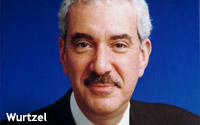
NBCUniversal’s top researcher Alan Wurtzel said there was considerable worry that making all Olympic events available live online this
summer would cannibalize prime-time TV viewing, but ample evidence emerged indicating the streaming was an add-on.
Research from comScore showed adults who watched the Olympics only
on TV spent an average of 4 hours and 19 minutes. Those consuming Olympic content on two devices (a TV and computer) did so for 5 hours and 18 minutes a day on average.
Moving up to
three devices (TV, computer, mobile device), the average jumped to 6 hours and 50 minutes. Four-device users (TV, computer, mobile and tablet) consumed on average 8 hours and 29 minutes of content.
Those who watched on TV and a laptop averaged 22% more prime-time viewing, while those who also watched with a phone and tablet averaged more than 8 hours or double the amount watched by TV-only
viewers, said Wurtzel.
The London games, he said, signaled the “rise of the simultaneous viewer."
advertisement
advertisement
Total viewing exposures for the London Games, compared to the previous Summer
Olympics in Beijing were up 11%. The newer platforms -- mobile and TV VOD -- grew the most on a percentage basis, 279% and 81% ,respectively. But TV viewing was also up, by 2%, while online grew
10%.
Many of the consumers were using more than one device at once. Wurtzel, the president of research at NBCU, characterized that as “the new normal.”
NBCU found
that among people consuming Olympic content on a TV and at least one device, 54% engaged in simultaneous viewing. It was not just a younger-person phenomenon. Research found within an 18-to-24 demo,
53% were “SimViewers.” The percentage was about the same within a 25-to-54 demo and 55+ segment.
SimViewers did skew male at a 55%/45% gender breakdown. Google data shows
that SimViewers watched 17% more TV.
ComScore and Google were two among a run of entities NBCU called on to help it analyze Olympic consumption patterns. Wurtzel presented a flurry of
data Wednesday at an Advertising Week gathering of the MPG Collaborative Alliance.
NBCU also found that mobile use continues to grow among older demographics. For example, with the
2008 Beijing Games, 15% of those using mobile devices for Olympic content were over 50. That increased to 27% two years later and rose to 34% this summer. “Mobile is mainstreaming,”
Wurtzel declared, noting that there were a total of 24 million mobile streams during the London games.
With Twitter and Facebook having boomed since the 2010 Vancouver Games, Wurtzel
referred to London as the “first social Olympics.” Within a survey pool, 70% of the 13-to-17 year-olds agreed with the statement: “Social media made me more interested in watching
the Games on regular television.” The figure increased to 73% among 18-to-34 year-olds and was at 56% among 35-to-49 year-olds.
He called the London games were the “first social
Olympics,” reporting that a total of 83 million comments were made about the games via social media throughout their duration.
Wurtzel did say social-media use is still
relatively limited, a contrast to some media reports that would paint it as widespread.